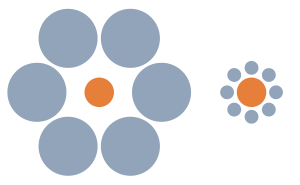Help patients with moderate visual impairment move around their surroundings
Researchers at Universidad Carlos III in Madrid (UC3M) have developed a system that can be built into virtual reality goggles that help patients with moderate visual impairment move around their surroundings. The application detects the distance and shape of objects and interacts with the user by means of a simple color code.
People with moderate visual impairment, particularly those who have difficulty perceiving the full extent of their surroundings, could use the ingenious device that these UC3M scientists have created. “This device is aimed at people who would bump into everything that they fail to see because of their loss of visual field, caused by glaucoma, retinal pathologies, etc.”, states the head of the project Professor Ricardo Vergaz, of UC3M’s Electronics Technology Department.
The prototype was developed using an HMD device (Head Mounted Display), a virtual reality helmet that includes two cameras to which a small computer has been attached; the computer processes all of the images that it receives. Then, thanks to an algorithm that the researchers have developed, the system determines the distance and outline of the objects and communicates the information to the user in real time using two micro screens, highlighting the silhouette of the elements in the scene and varying the colors according to their distance. “It detects objects and people who move within the visual field that a person with no visual pathologies would have. Very often the patient does not detect them due to problems of contrast”, explains Professor Vergaz. “The information regarding depth is what is most missed by patients who use this type of technical aid”, he adds.
Currently the invention is being tested using “intelligent” goggles, in collaboration with the Instituto de Oftalmología Aplicada (Institute for Applied Ophthalmology – IOBA) at the Universidad de Valladolid, where clinical tests are being carried out with a view to the device’s validation and applicability. “After testing the device on a representative sample population of patients who could use it, the IOBA will inform us of their final results at the end of this year; this will allow us to evaluate the success and validity of its performance and then improve it”, comments Ricardo Vergaz. The final objective is to improve the ergonomics of the device so that the user doesn’t feel any inconvenience in wearing the goggles while carrying the lightweight electronic mechanism, which can actually fit in a pocket.
via Universidad Carlos III de Madrid
The Latest Streaming News: Intelligent goggles updated minute-by-minute







